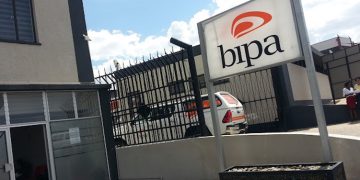
Namibia’s rail transport sector is plagued by inefficiencies, significantly increasing energy costs across the country, a recent CITAC report commissioned by Puma Energy has revealed.
The report titled, Bridging the Gap in Energy Infrastructure, reveals that railage rates between Walvis Bay and Windhoek are priced at N$22 per cubic metre (m³), compared to N$24 per m³ by truck.
Transporters often use railage rates as a benchmark for truck rates, given that rail rates set the recovery in the price structure.
Despite the theoretical cost advantage of rail transport, inefficiencies in rail operations are driving up overall transport costs.
“Railage rates could be in the region of N$115 per m³, compared to N$146 per m³ for road transport across the same distance. The challenge in Namibia is the inefficiency in rail operations, which results in a continued reliance on road tankers,” said the report.
The report highlights that while rail transport offers potential cost savings, operational shortcomings are leading to higher expenses, forcing many to opt for the more expensive road transport.
The report also addresses the Trans-Kalahari Railway project, which aims to establish a 1,500km rail link connecting Walvis Bay and Gaborone. The project is currently on hold and seeking investors.
The report notes that without a significant increase in mining tonnage, the investment in this railway project is not justified solely by the volume of liquid fuel.
“The Trans-Kalahari Railway project was designed to enhance regional connectivity and support economic growth. However, its current suspension reflects broader challenges in infrastructure investment,” the report states.
“The lack of immediate returns from liquid fuel volumes means that large-scale projects like this one may remain on hold until mining tonnage increases.”
On the current state of rail transport, Puma Energy Namibia General Manager Adell Samuelson said historically, rail was the preferred method for fuel transportation due to its efficiency and safety compared to road transport.
However, Samuelson explained that recent inefficiencies have drastically reduced the reliance on rail.
“I spoke about it earlier this year, last year. I’ve been in this business for just over 20 years. Rail was once our first preference for fuel supply. It was self-sufficient, reduced road accidents, and could transport large quantities. But that picture has changed dramatically. We now rely on rail for only about 12% to 14% of our transport needs,” Samuelson said.
She elaborated that in the past, rail accounted for 60% to 70% of the company’s transport, and this has shifted significantly.
“Our railway provider, TransNamib, has faced challenges, including losing locomotives and receiving a government bailout. Despite plans to convert some locomotives to green technology, the rail network remains inadequate. This forces us to rely more on road transport, increasing the risks of accidents, emissions, and costs,” she said.
The CITAC report underscores the need for Namibia to improve the efficiency of its rail network to attract more volumes and reduce reliance on road transport.
“Addressing these inefficiencies is crucial for lowering transport costs and improving logistics in the region,” the report said.













